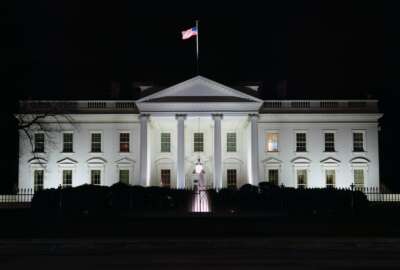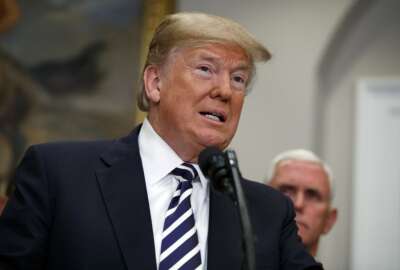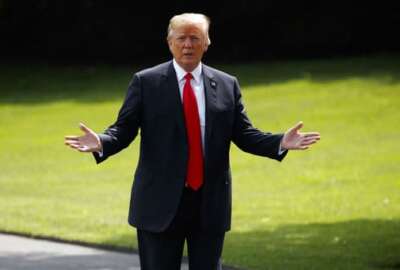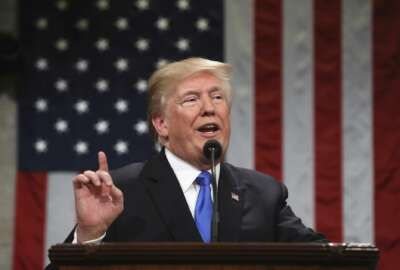
OMB: ‘We value the workforce that we have’
The success of the new President's Management Agenda hinges on the Trump administration's ability to modernize the federal workforce, the Office of Management a...
Best listening experience is on Chrome, Firefox or Safari. Subscribe to Federal Drive’s daily audio interviews on Apple Podcasts or PodcastOne.
Creating change under the new President’s Management Agenda ultimately hinges on the success of one of the three pillars, perhaps more than the others.
If the Trump administration can’t modernize the federal workforce for the 21st century, it’ll be tough to change much about the way government handles data transparency or IT modernization, the Office of Management and Budget acknowledged.
“IT is where we have to start,” said Margaret Weichert, deputy director for management at OMB, said Wednesday morning in Washington at a discussion on the President’s Management Agenda, produced by Government Executive. “Data is where we start to get stuck sometimes. Where a lot of projects grind to a halt is actually in the workforce. [It’s] not because we don’t have good people. That’s nonsense. We have great people.”
“The people who will ensure that we can stay focused on the missions that we have and serve the American people the way they deserve to be served is the workforce that we have,” she added. “I want to be really, really clear about this. We value the workforce we have.”
Weichert said it’s imperative she and other senior administration officials work to change the regulatory framework that stymies agencies’ abilities to repurpose and educate their employees for new kinds of work.
“If we’re trying to use business process automation to retire legacy systems and we have outdated Title 5 frameworks that make it difficult to move people around, make it difficult to train someone who is taking data from one system or from a fax and re-keying it into another system to change their job, if we have union contracts that prohibit the exactly the same thing, it makes it impossible to cost-effectively invest in new technology,” she said.
It’s also why the Trump administration is championing the three executive orders the president signed in late May on employee performance, official time and collective bargaining agreements. More changes are coming through executive orders and agency directives, the Office of Personnel Management has promised.
Those three EOs have stirred up some controversy, OPM Deputy Director Michael Rigas acknowledged. 
In his most recent State of the Union address, President Donald Trump called on Congress to empower cabinet secretaries to do two things: reward good good workers and remove federal employees who “undermine the public trust.”
But the public and the workforce are focusing more on the latter directive than the first, Rigas said.
He said the administration’s proposed, $1 billion workforce modernization fund would address some of the challenges agencies face when rewarding high performers.
“Some of the initiatives which we have underway and are being proposed to provide more flexibility, to provide more incentives, to reward high performance and recognize high performers, are going to be a big part of that effort,” Rigas said. “We just need to do a better job of talking about what those initiatives are.”
The president’s recent trio of executive orders have certainly sparked a wide variety of reactions. Two of the largest federal employee unions have sued the Trump administration over two of the directives.
But the administration says the orders are in reaction to employee and agency feedback.
According to the 2017 results of the Federal Employee Viewpoint Survey, 42 percent of workers said their agencies take steps to deal with poor performers who can’t or won’t improve.
OPM also polled individual agencies and found that many had inadvertently put additional processes in place that aren’t required by law and make it more difficult to discipline poor performers, Rigas said.
“This is an effort to streamline this and make sure that high performing employees are rewarded and recognized and poor performing employees are managed and addressed,” he said of the president’s employee accountability EO.
In reviewing the president’s recent executive orders, the Homeland Security Department has recognized the need for consistent performance management and collective bargaining agreements across the agency but acknowledges that one size doesn’t fit all, said Angela Bailey, DHS chief human capital officer.
“We have unions that are within some of our components,” she said. “We just need to be respectful of many of the past practices and longstanding negotiated agreements and the relationships that have been built over time, but we need to balance that with the spirit and intent of the executive orders.”
Bailey said she’s tried to research how many private sector employees have performance or conduct issues during any given year, but she’s been unable to find a clear answer. A little less than 3 percent of the federal workforce has a performance or misconduct issue, she said.
But Bailey said DHS has been making a conscious effort to focus more on the positive — and less on the negative.
“Let’s stop worrying so much about the 3 percent,” she said. “How about if we put some time, actually, into the 97 percent who come to work every day, do a great job and really are dedicated? How about if we invest as much time and energy as we possibly can into that 97 percent. It’s really starting to pay dividends for us.”
Copyright © 2024 Federal News Network. All rights reserved. This website is not intended for users located within the European Economic Area.
Nicole Ogrysko is a reporter for Federal News Network focusing on the federal workforce and federal pay and benefits.
Follow @nogryskoWFED
Related Stories

Trump signs executive orders making it easier to fire feds, overhaul official time





